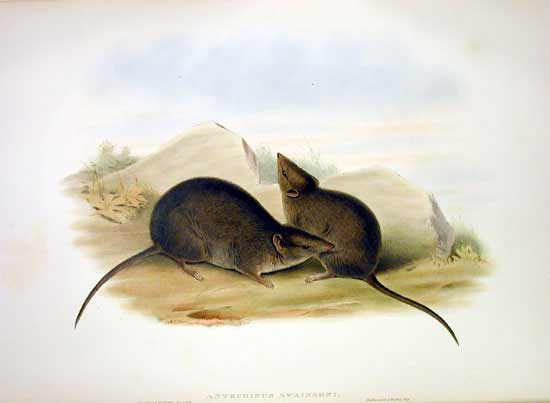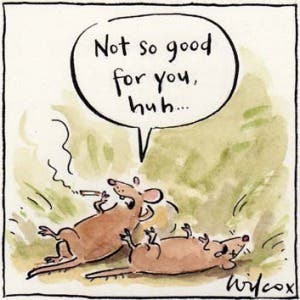A team of biologists from Queensland discovered two new species belonging to a marsupial genus known for mating until it dies – literally. The antechinus marsupials look like pouched mice or shrews, but as cute as they may look, they’re real beasts in the sack. Typically, once the breeding season starts, males embark in vicious sexual orgies that last for 14 hours at a time, and it doesn’t stop for two weeks. At the very end, the males suffers from diseases, internal bleeding, their fur falls off and some get ulcer. Ultimately, all that whole lotta love kills them, and rather painfully too. Though they’ve just been discovered, the new antechinus species are considered endangered by the researchers.

The new species are the Tasman Peninsula dusky antechinus (Antechinus vandycki), found near Port Arthur in Tasmania, and the mainland dusky antechinus (Antechinus swainsonii mimetes), found throughout south-eastern Australia. This brings us now to 15 known species of antechinus, five of which are endangered. The findings were reported in a paper published in Memoirs of the Queensland Museum – Nature.
Sex is no joke for these critters: it’s about life and death
Males don’t live past a year, but during their short lives they burn bright. Every winter when food is scarcest, around August-September, the antechinus mating season starts. When this time comes, the males become infused with an overdose of testosterone which drives them on a sex craze. Mating with as many females as possible is the ultimate competition for the antechinus males, which is kinda weird considering the winner is, statically-speaking, the first to die from all the exhaustion. Their prize lies in scoring hundreds of new pups once the females are inseminated. In the animal kingdom, the ultimate glory is passing on your genes, living once more one DNA sequence at a time. But I may have overly romanticized the whole thing; after all, these marsupials shag more often than Tyrion Lannister in a Westeros brothel.
“It’s just this absolutely primal urge,” said QUT mammalogist Dr Andrew Baker.
“There’s orgies of violence and sex and, in antechinus, it happens every year.”

To continue mating until there’s nothing left of them, the antehinus males strip their body of vital proteins and also suppress the immune system so as to free up additional metabolic energy. Effectively, they’re renouncing their long-term survival resources for short-term gains. A few weeks later, there’s little left of the tiny marsupials.
“They’ll bleed internally, they have ulcers, their fur falls off in patches, sometimes they’re stumbling around blind and still trying to mate,” Dr Baker said.
“You kind of get to know some of them and then the males don’t even get to live a year, they only live about 11 months before they all die,” PhD student Thomas Mutton, said for ABC News.
“It’s kind of sad.
“I think their sex life is quite interesting to humans, it’s certainly a bit different to how we do it.”
So, every year the antechinus population is halved naturally. But, what happens if you add deforestation and loss of habitat to that? Factor in that these animals live exclusively in remote locations, in high altitude and low temperature, and conservation seems even more difficult. The Tasman Peninsula dusky antechinus is the most vulnerable, with only a couple hundred individuals estimated to live in the forests of the Tasmanian Peninsula.
“I suspect it’s been isolated on the Tasman Peninsula for perhaps millions of years and this rare species is just sitting down there as we speak, in the middle of a small state forest that’s being logged,” Mutton said.
“Its precious old-growth forest habitat is rapidly being removed.”


